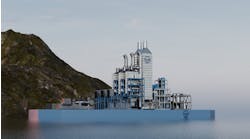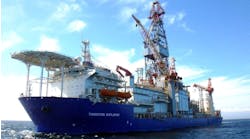As offshore operators move from portfolio realignment to anticipated profit growth in 2018, high quality investment opportunities are proving hard to come by.
Hundreds of thousands of personnel have left the offshore industry following significant declines in investment in new and existing assets over the past few years. The result is that operators are now struggling to both quantify the value of potential opportunities and put in place the right strategies to deliver profitable production again.
At the same time, they also need to preserve the production gains and improved margins achieved in response to the oil price decline.
While investments in new and innovative technologies have played a crucial role in delivering cost savings, strategic E&P software is best placed to immediately improve returns and help operators allocate capital.
This can be seen in three key areas – brownfield development via intelligent well planning and cost models; increasing recovery factors through predictive reservoir models; and expanding production efficiencies based on a complete overview of the field.
To see the benefits of brownfield investments, look no further than the North Sea – a region that has seen a production increase of 16% since 2014, according to Oil & Gas UK. Key to this improvement is intelligent well planning and its accompanying software innovations. These technologies allow operators to find and exploit bypassed zones in the reservoir by allowing engineers to set drilling parameters for each trajectory and compute well path uncertainty and collision risks.
Cost models can also be included to enable operators to evaluate different drilling scenarios and ensure the right decisions are made. Furthermore, engineers can also redesign field production concepts and parameters to complement new producers and injectors. These technologies make infill drilling an attractive method for increasing recovery rates without a major new infrastructure spend.
With average global recovery rates still in the low 30% range, the smallest percentage improvements can have a huge impact on production and the bottom line.
In such cases, accurate predictive reservoir models that realistically represent the underlying seismic data and incorporate all uncertainties throughout the reservoir characterization workflow are vital. These models let operators test their field production concepts and accurately anticipate the business impact of their infill plans.
Recent technology advances include new workflows that tightly integrate the static and dynamic modeling domains and propagate uncertainties from seismic characterization right through to geological modeling and simulation.
This means that reservoir uncertainties can be captured and varied as input parameters, creating an ensemble of realistic reservoir models that all feed into the reservoir simulator.
Effectively, advanced analysis lets operators convert more of the resource into producible reserves, adding immediate value to the company with minimal investment. The result is a better understanding of the reservoir geometry, more robust reserves estimations, and better-informed decisions for increased recovery.
Emerson has spent the past few years partnering and refining such a workflow with Statoil – a company with ambitions to increase its recovery rates on the Norwegian continental shelf to 60%.
Digital technologies incubated in other industries are also seeing more uptake in offshore oil and gas to improve recovery. Take the growth of machine learning where computer systems can learn, improve, and ‘evolve’ when exposed to new and additional data.
Now commonplace in telecoms and financial services (McKinsey’s State Of Machine Learning And AI, 2017), the upstream offshore oil and gas market is also starting to see machine learning’s benefits as part of the E&P software toolkit to predict oil-bearing formations. Applications include calculating the probability of different rock-type distributions or incorporating pre-stack and/or post-stack seismic attributes directly into the workflow.
The same technology transfer from other sectors can be seen with the evolution of cloud-based collaborative workflows. These are now used to optimize the design and management of well systems and enrich production datasets to better forecast future performance. These technologies greatly increase the efficiency and accuracy of locating and producing oil and gas reserves.
Finally, there is the need for increased production efficiencies and the ability for operators to digitally integrate reservoir planning and management with topsides operations. Such a system provides a complete overview of the field and contributes vital input into future production plans and engineering activities.
Again, the latest technologies are delivering, helping operators align their modeling, uncertainty quantification and simulation data with production plans, and creating a broad ecosystem where real-time intelligent data from the field is combined with reservoir characterization software.
This information is continuously fed back for analysis by geophysicists, geologists, reservoir engineers, drillers, asset managers, production engineers, auditors, and senior managers. Advantages include increased depletion rates that translate into higher cash flow today for companies to invest in new projects.
The success of maximizing asset returns and making the right investment decisions boils down to operators’ ability to characterize and understand their reservoirs and generate accurate information to guide production and field decision-making.
The good news is that today’s software technologies are helping meet the challenges of 2018 and beyond – delivering new and sustained offshore operator growth.


